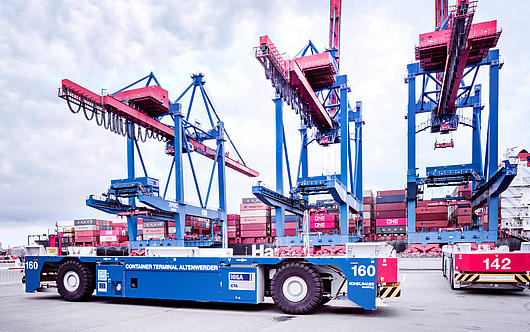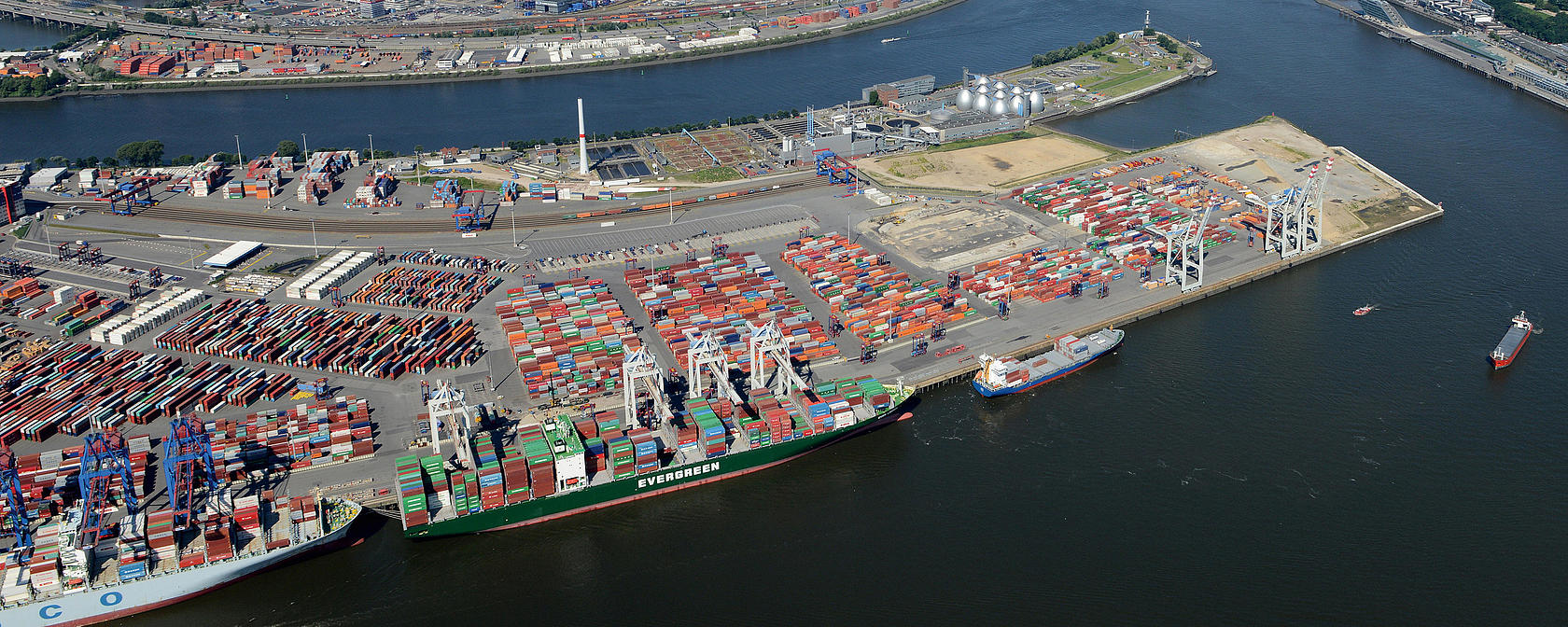
According to HHLA and its partners, water vapour will be the only “fumes” coming out of the exhaust when hydrogen powers trucks, straddle carriers, tractor units and other heavy-duty trucks operate in the Port of Hamburg in the future. This is the goal that the Clean Port & Logistics innovation cluster is centred on.
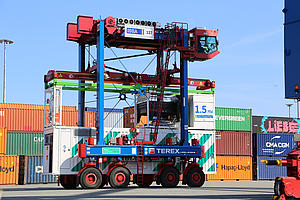
Straddle carriers transport containers between ships and yards at the HHLA terminals 24 hours a day, seven days a week. Hybrid drives reduce climate-damaging carbon dioxide emissions by around 50 tonnes per vehicle per year in some carriers. This is no small amount, but Dr Georg Böttner doesn’t think it is enough. The Head of the Executive Board Projects is working with his team to prioritise the use of hydrogen, also known by its chemical symbol H2, as a future energy source in port operations.
There are plans to test a tractor unit and an empty container stacker with an H2 drive during practical use as early as 2023. Other equipment will need to follow suit, because HHLA operations aim to become climate-neutral as a clear corporate goal. Hydrogen could become a substitute for fossil fuels such as diesel or liquefied natural gas (LNG) during this process.
Testing innovations in practical use
If the gaseous element H2 is generated using electricity from sustainable sources, the fuel is climate-neutral. Oxidation only produces water vapour, i.e. H2O, from H2 and oxygen. However, hydrogen generally releases its energy in a more efficient way in a fuel cell. The Clean Ports & Logistics (CPL) innovation cluster has decided to test these kinds of solutions in practical use at the Port of Hamburg.
“We’ve already had positive experiences in the field of electric mobility,” explains Böttner. “However, when it comes to lifting and lowering heavy loads, equipment with battery drives soon reach their limits.” This includes straddle carriers and reach stackers in use at the terminals, for example.
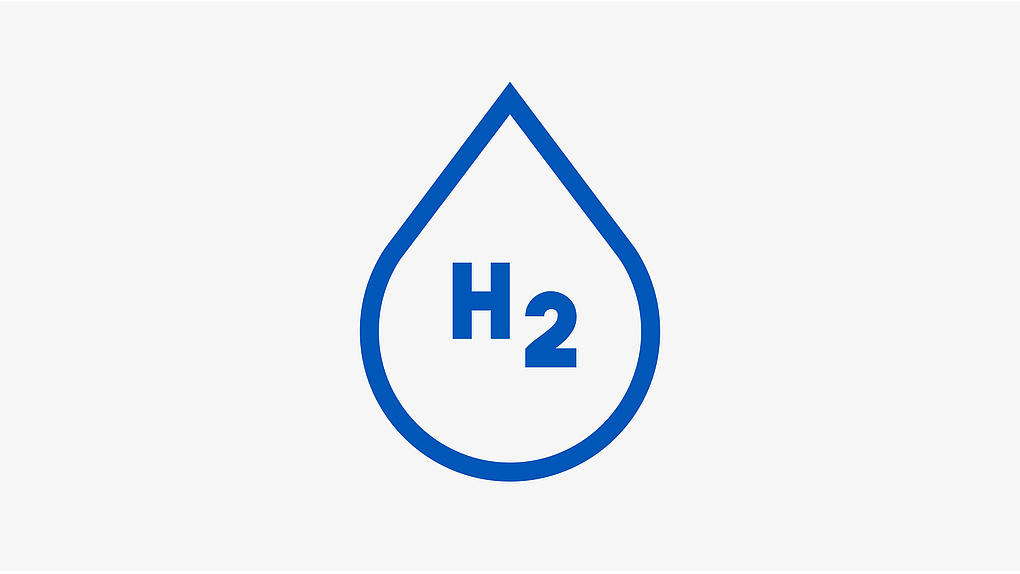
What is a fuel cell?
A fuel cell is where a fuel and an oxidant – usually hydrogen and oxygen – synthesise. Electric energy is directly released in the process.
This is why efficiency is higher than with a generator driven by an internal combustion engine.
The end product is steam. In principle, this is the reverse of electrolysis, in which electrical energy splits water into hydrogen and oxygen.
This process has been around since 1838, but it was not until the 1990s that major efforts were made to adapt fuel cells to be used as power sources for cars and ships.
Prototypes will need to show their worth during normal practical use. Initiated by HHLA, the CPL Test Centre is being set up at HHLA Container Terminal Tollerort (CTT). There are also many other items on the research agenda, such as fuelling vehicles with hydrogen. Böttner is not only interested in technical aspects: “Many processes, such as refuelling vehicles, will change.” CPL therefore also provides training modules. The project will show how employees need to be trained to work in a climate-neutral port and what topics are relevant to them.
“Our operations must run smoothly,” stresses Böttner. “This is the most important requirement that applies to both future technologies and those already in use.” HHLA’s efforts fit perfectly into the hydrogen strategy adopted by the German coastal states, with Hamburg being one of the driving forces among them.
The number of research projects aimed at replacing conventional fuels with hydrogen is growing throughout Germany. Specific large-scale hydrogen projects are already being set up in Hamburg. The Hanseatic city intends to provide a total volume of € 1.1 billion for investments for the next five years, with € 520 million of this amount coming in the form of subsidies from the federal government and the EU.
Hamburg as a hydrogen technology pioneer
“If you truly wish to change the climate, you can’t ignore hydrogen,” stresses Michael Westhagemann, Hamburg’s independent Senator for Economic Affairs. Besides its political will, Hamburg has another perfect prerequisite to demonstrate its firm commitment to hydrogen: the former Moorburg power plant on the edge of the port.
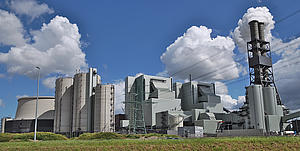
In the future, H2 is to be produced in what was once the most state-of-the-art coal-fired power plant in Germany. This will be small in scale at first – the current power plant operator Vattenfall intends to put a 100-megawatt electrolyzer into operation there from 2025. This plant will produce “green” hydrogen using electricity from wind turbines. “It is clear, though, that capacity will not remain at 100 MW,” states Markus Pitz, Head of the Hydrogen Economy Unit in Hamburg’s Department of Economics. The course of growth has already been defined.
Vattenfall intends to expand the power plant to form the Hamburg Green Hydrogen Hub in cooperation with project partners Shell, Mitsubishi Heavy Industries and network operator Wärme Hamburg. The location is connected to the European grid via a 380 kV line, meaning green electricity from the wind farms in the North and Baltic Seas could be transmitted to Hamburg for hydrogen production. At the same time as the Vattenfall project, Quickborn-based HanseWerk is preparing the construction of a 25-megawatt electrolyzer in the port. The energy company plans to invest € 1.3 billion and supply the hydrogen, also produced using green energy, to industrial customers.
A network of producers and customers is being created
In addition to energy producers, a company network has also been established on the customer side, which includes Airbus Industries, Arcelor Mittal’s Hamburg steelworks and the Aurubis copper smelter alongside HHLA. The aircraft manufacturers are experimenting with hydrogen to provide climate-neutral flights, while the steelmakers are seeking to cut their carbon dioxide emissions to zero. Hydrogen could provide the clean energy for this too. And Aurubis plans to test ammonia as a means to store hydrogen for its production.
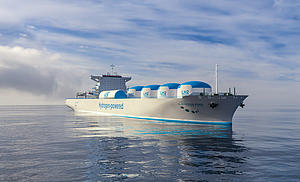
HHLA can contribute to the wide-ranging future use of hydrogen with its expertise as a port and logistics specialist. “Due to high energy requirements, Germany will not be able to produce the hydrogen it needs entirely on its own,” says Böttner. A large proportion will initially be delivered by ship in the form of H2 methanol or H2 ammonia rather than pure hydrogen. Federal Minister for Economic Affairs Robert Habeck has already agreed suitable supply options with the United Arab Emirates and other sources. A test run has also already been planned to see how HHLA handles ammonia arriving in the port from the United Arab Emirates.
Pioneers in importing hydrogen
For the Managing Director of the Hamburg Chamber of Commerce, Malte Heyne, the project partners involved are already “pioneers in creating import structures in Hamburg as a hydrogen hotspot”. HHLA wants to play a major role within the context of these import structures, a role which is to extend beyond activities in the port.
The internationally active logistics company has extensive expertise in handling and just-in-time transport of containerised gases, frozen liquids and other potential H2 carriers inland. HHLA subsidiary Metrans can achieve this in a climate-neutral way by using rail transport, which would further increase the sustainability of the energy source.
“The key phrase is decarbonisation of logistics,” emphasises Chairwoman of HHLA’s Executive Board Angela Titzrath. “Port handling and heavy goods logistics will make their contribution to climate protection and improving the quality of life in urban areas.” The applications developed and tested in the port can then be used at other points along the logistics chain.
